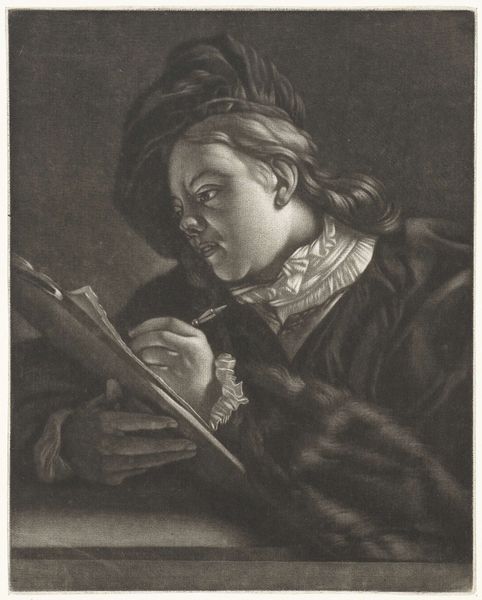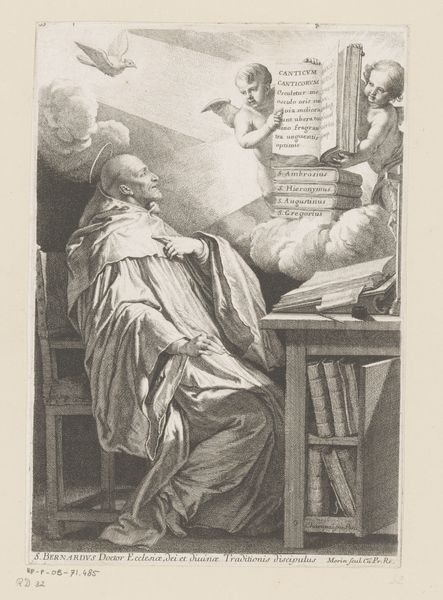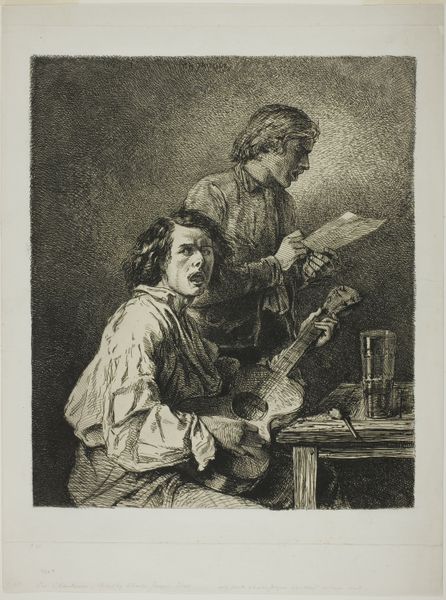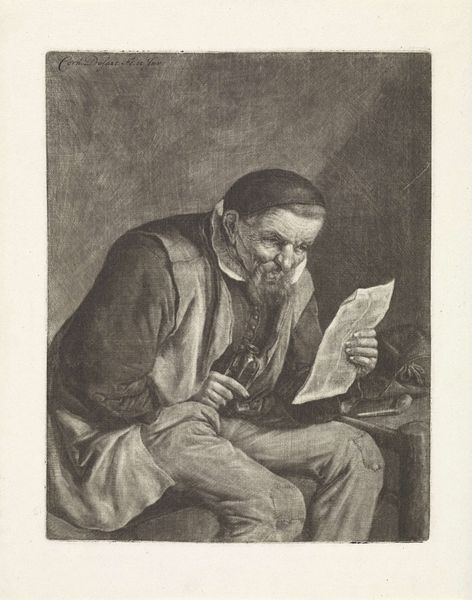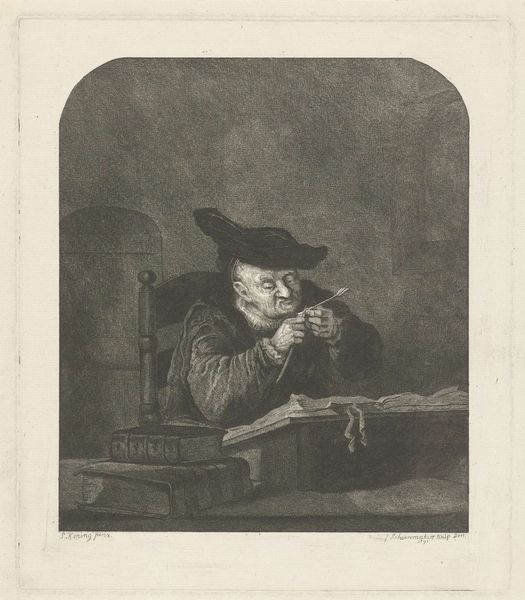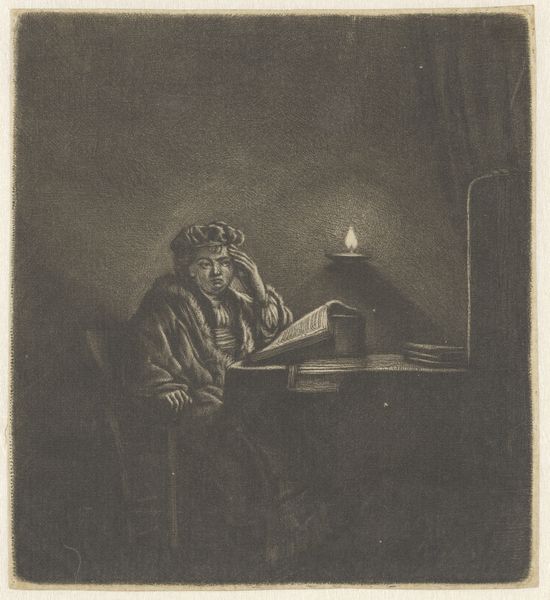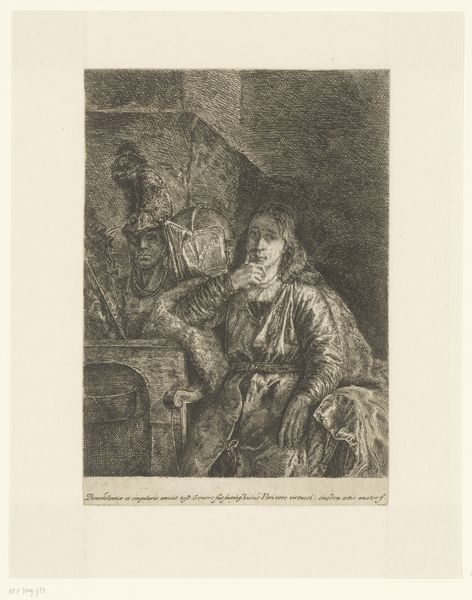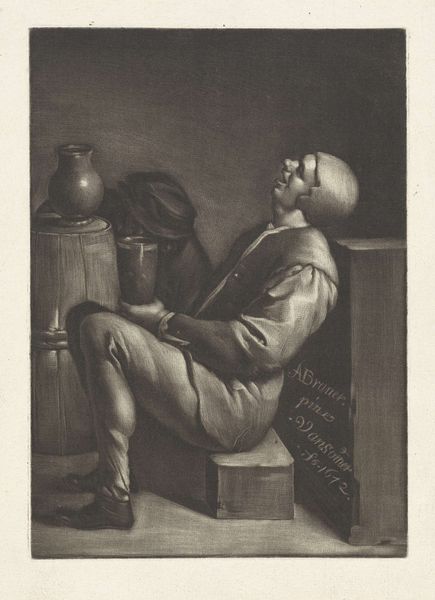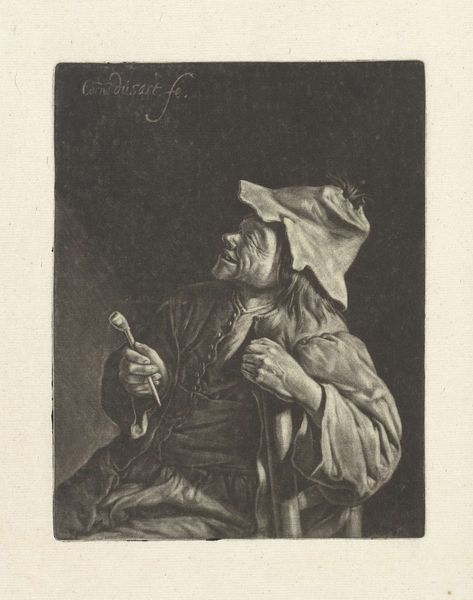
drawing, print, engraving
#
portrait
#
pencil drawn
#
drawing
#
16_19th-century
# print
#
old engraving style
#
charcoal drawing
#
pencil drawing
#
19th century
#
engraving
#
realism
Dimensions: height 374 mm, width 262 mm
Copyright: Rijks Museum: Open Domain
Curator: The density of this print, “Portret van filosoof,” a work made sometime between 1740 and 1808 by Bartolommeo Follin, is astounding. Editor: Yes, I see what you mean, a landscape of the mind rendered in near monochrome. He appears steeped in thought. The composition exudes a contemplative, almost melancholic mood, doesn't it? Curator: I think so. Look at the objects that surround him. He is literally grounded by a globe, that may well signify our terrestrial home, juxtaposed with what appears to be his own attempt to draw a square, to inscribe reality itself in a geometrical prison. A slightly dark-hearted endeavor? Editor: Absolutely. And there's something profoundly unsettling about it. The globe hints at vastness, infinite possibility, while his attempt at mastery, the tools laid before him, suggest a desire to confine, to control, a deeply problematic desire actually… Curator: Interesting to connect it to current problematics. Follin uses the conventions of realism. Everything is legible, knowable, but there’s a slight eeriness as well. Notice how his wreath seems too heavy. Even his pose – his hand propping up his chin – suggests he is weighted down. Editor: Yes! The hand becomes a performative constraint and one must ask who gave him this burden of the Western, hyper-rational, gaze… The details, the lines creating the illusion of depth, also point at the constraints of representing reality—but I wonder who or what is served by all of these elements! The so-called ‘portrait of the philosopher’ might be a critical statement… Curator: You always take us on the road to places that would otherwise remain unexplored! Editor: Thank you, thank you, the road often does lead to unexpected findings. Anyway, the beauty is also in the execution itself, don't you agree? This kind of dense detail is incredibly hard to pull off convincingly. Follin managed to create a deeply symbolic depiction of his character. What do you make of the angle of light on the frame next to him? Curator: It does appear to almost signify "nothing to see here," but it makes me reflect that even frames contain nothingness... I hadn't really thought about this drawing from this perspective! Editor: Right? Always good to remain receptive!
Comments
No comments
Be the first to comment and join the conversation on the ultimate creative platform.
